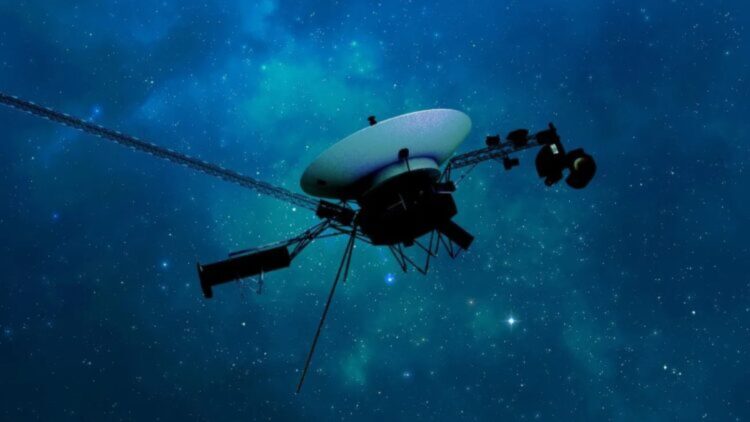In an extraordinary event, Voyager 1, traveling in deep space, sent the signal to Earth using a backup radio turned on in 1981. This historical event was due to a communication breakdown in October 2024 when the craft, over 24 billion kilometers from Earth, had to switch to a prehistoric transmitter because of a power-saving mode.
It is about time that we look at the fine print of this fantastic accomplishment and what it spells for space travel.
How Voyager 1 switched to its backup transmitter after a communication failure
The communication subsystem of Voyager 1 went into protection mode in the middle of October 2024 when a command was sent to turn on one of its heaters. This activated the fault protection system on the spacecraft, which was put in place to protect the spacecraft’s power.
The system reduced the power to non-critical functions, such as the X-band, one of its principal radio transmitters. The fault protection system is appropriate to guarantee that the spacecraft remains operational by avoiding power overdraw as Voyager 1 moves away from Earth.
This glitch first showed up when NASA’s team, using the DSN of antennas to communicate with Voyager, did not receive a signal on the expected frequency. Several days later, the team could identify that the spacecraft was using the backup radio transmitter – the S-band active only in 1981.
This was done to save power, but it also had the undesirable side effect of significantly reducing the signal strength available to NASA engineers due to the distance involved.
The change to the S-band radio transmitter represented one of the most outstanding milestones in space travel. First, the S-band transmitter was employed when Voyager 1 was still relatively close to Earth and had a lot of power onboard. However, using the S-band for the second time was difficult for the decision-makers.
The spacecraft was way past the solar system by 2024, and the S-band was weaker; therefore, communication was complex. NASA engineers could not decide whether they could pick up this weak signal from Earth.
Nevertheless, the engineers did not cease the efforts, and finally, in one of the trials, they managed to lock into the S-band frequency. The team’s work was to re-establish contact with Voyager 1, although the equipment on board this spacecraft had not been active for more than 40 years.
The importance of Voyager 1’s continued journey beyond our solar system
Specifically, the Voyager 1 was launched in 1977, and much to the surprise of immunists, it has persistently fulfilled its mission in the unfriendly conditions of interstellar space. Launched in September 2006 and crossing the boundary of our solar system in 2012, it became the first human-made object to venture into this unknown region.
But it has not been a smooth ride for the company at all. As it gets farther from Earth, the spacecraft has had several mechanical problems, including power loss and communications problems. Earlier in 2024, engineers faced another challenge when the spacecraft sent out a non-sense message due to a different complication in its relay system.
These are issues that have made the maintenance of Voyager 1 more difficult as time passed. However, the spacecraft is still functional scientifically as long as it can collect data on cosmic rays, magnetic fields, and the universe outside the solar system.
Though launched in 1977 and currently at a staggering 11 billion, 244 million, and 944,000 miles from Earth, Voyager 1 is still a unique representation of human ingenuity in space technology.
What does Voyager 1’s current situation mean for NASA and space exploration?
NASA’s team is now analyzing what led to the recent failure of the Voyager 1 spacecraft. The problem began with a command to turn on a heater. Under any circumstances, the fault protection system should not have been activated due to the available energy on the spacecraft.
The team has said it will try to identify the cause of the problem even though it may take weeks to diagnose it fully. In the meantime, the spacecraft continues to operate on the backup S-band transmitter through which essential information can be received.
This episode is an essential lesson that space exploration is not always easy and will only get harder as we push further into the universe. That Voyager 1 is still transmitting data back to Earth after over forty years in space is evidence of the sound engineering done on it.
While NASA maintains its watchful eye on the spacecraft, scientists worldwide look forward to the information it could pass on about the edges of the universe. Although an old transmitter is used, Voyager 1’s communication ability is a new achievement in space exploration and a victory for mankind.
As the spacecraft travels further, it will still be an icon of people never giving up on pursuing the stars or space.

